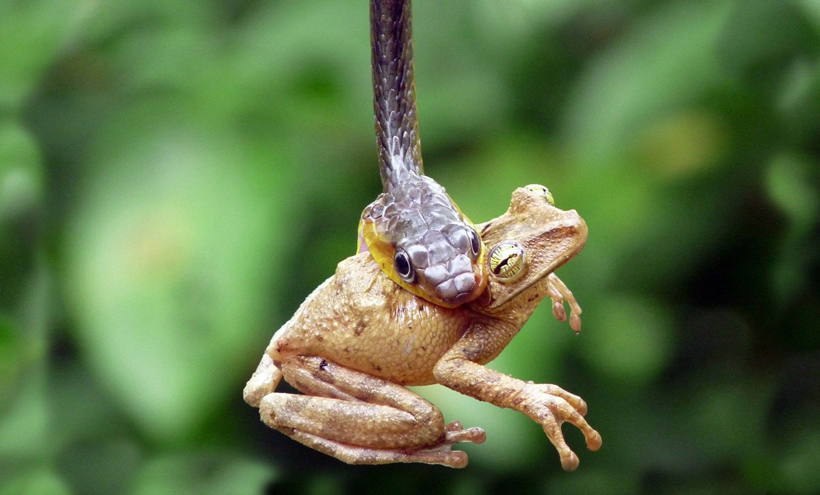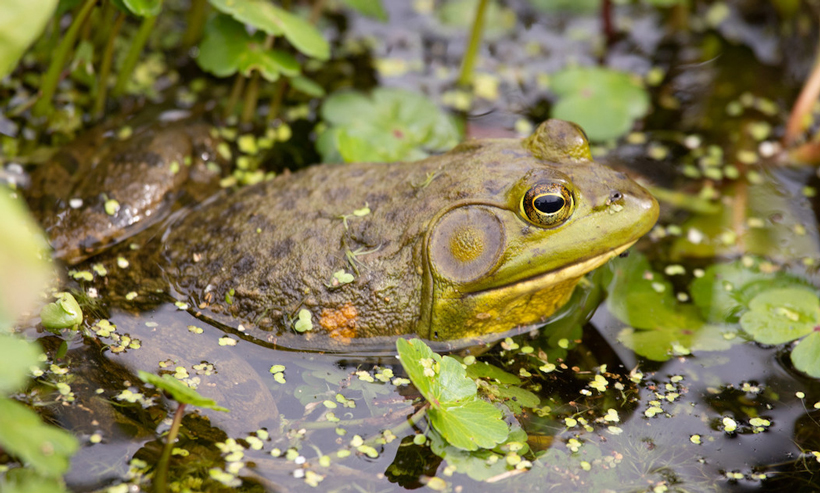We usually use frogs for experimenting, and some also keep them as a pet. Many people also consume frogs as food. However, while dissecting for food or science, many controversial methods came up, as there is a belief among people that frogs lack the feeling of pain.
So, do frogs feel pain? Frogs have pain receptors and can feel pain. However, they don’t feel the same pain as mammals. The pain signal travels through a route called the neuroanatomical pathway. Thus, it is scientifically confirmed that frogs also feel pain.
However, as mentioned, frogs have different pain-stimulating scales compared to humans. Hence, when and how much they feel pain is an interesting fact. Here, we will share all of these facts. So, let’s get started.
Do Frogs Feel Pain? – Scientific And Behavioral Evidence
Frogs belong to the Amphibian class, animals that need a moist environment to survive. For many decades, humans believed that amphibians did not feel pain. However, scientists have proven that they can feel both physical and mental pain.

According to studies, frogs can feel several types of pain, such as mental stress, physical and psychological pain, anxiety, fear, excitement, etc. So, let’s elaborate on the scientific and behavioral evidence that proves frogs feel pain.
Scientific Evidence of Frogs Feeling Pain
Though frogs may not feel as much pain as humans, they still have some pain-receiving nerves and show feelings of pain. Let’s take a look at those:
- Developed nervous system
An adult frog’s nervous system consists of a brain, pain receptors, and nerve fibers. Pain receptors (known as nociceptors), transmit the pain signal (noxious stimuli) and other pain signals to their linked brains. Thus, after the nerve fiber carries the signal to the brain, the fox will feel pain.

- Molecules for diminishing pain
Frogs possess some molecules that help them to reduce the feeling of pain. These molecules are known as endogenous opioids. They exist in animals only who can feel pain or has similar stimulation. So, the existence of it proves that frogs feel pain.
- Frogs also show physical discomfort when exposed to a noxious stimulus (a strong stimulus that damages tissues and causes pain).
- They display protective movements (motor responses) toward pain stimulation.
- They are noticed to try to avoid unpleasant stimuli (avoidance learning).
Behavioral Evidence

If a frog feels pain (physical or emotional), it will show some obvious behavioral signs, which include:
- Exhibit signs of anorexia (appetite loss).
- Paler appearance.
- Increases the swallowing of air.
- Do not come out of the habitat for a long time.
- Sometimes it will become more agitated.
- Some of them make loud noises.
Physical Response of A Frog Exposed to Pain or Unpleasant Stimulation
To make sure you do not cause your frog pain or discomfort, you need to know the physical signs of it when exposed to such stimulation. So, we have shared those physical reactions from which you can detect whether your frog is in pain or discomfort and avoid those actions.

Sudden Rise In Heartbeat
When a frog is distressed or in discomfort, its heart will beat rapidly due to being stressed. A frog mainly feels discomfort if it suffers from stress, pain, or panic. You can notice this increase in heart rate even when the temperature becomes hotter or colder.
Cramped Muscle
If a frog feels pain or is threatened, it will try to alleviate the blood flow to its relatively important organs. Thus, the blood flow to its muscles will be reduced, causing them to appear cramped.
Flushed Appearance
Sometimes, while in pain, the skin of the frog will become reddened or flushed. If the discomfort is very agonizing, the pain-relieving hormones will spread into the frog’s blood and can change the appearance of the frog.
Situations in Which Frogs Experience Physical Pain
Usually, a frog feels pain if it is injured. It can be wounded while escaping from a predator, if it is sick, or even when humans dissect it for study. Let’s discuss the general situations where a frog might get hurt.
Hunted by Predators

In the wild, frogs are often hunted by predators. If they see a predator, they will surely try to hide or run away. During the escape, it is easier to get hurt by accident. Also, sometimes predators will harm them. No matter how, if it gets injured, it will feel pain.
Hunted by Humans
We, as humans, not only kill the frogs to eat them, but we also hunt them to make them pets. If they are being hunted for food, they will feel less pain as they will be killed immediately.
However, nowadays, people usually do not hunt frogs for eating but rather for pets. As the frogs try to escape from the hunters, the hunter will use some methods to inflict pain on them so that they stop moving and submit soon.

Dissection
For scientific studies, many frogs are killed every year. Researchers even harvest them to use as a study tool. Those studies even increased the risk of extinction for some frog species.
As a Food
Some people like to eat raw frogs. For that purpose, the frogs are skinned alive and suffer tremendous pain. Also, sometimes people demand fresh frog meat. So the seller keeps them alive using painful methods so that the frog cannot escape.
Here’s a video that will help you understand why sellers should stop it;
FAQs
Let’s take a look at some related topics that may make you curious.
Though frogs have emotional feelings, however, like most mammals, they do not have a large range of complicated feelings. They can only feel anguished, fearful, and hungry.
Yes, if you touch a frog, it will get hurt. Frogs’ skin is mainly a moist barrier. If you touch it with your bare hand, the moisture will come off, and the skin will become dry. Also, some toxic substances can be passed to its skin and cause it pain.
Yes, they do. If a frog gets hurt by a predator, it will scream to call the other frogs for help and startle the hunter.
Final Words
So, we come to know that frogs are living beings with a pain receptor system. You certainly get your answer to “Do frogs feel pain or not?” Moreover, they feel pain when wounded, killed, or dissected and tortured. Even a bare hand touch from a human can inflict pain on its tiny body.
So, you should not hunt them, play with them, or torture them. Instead, help them if you find them wounded in the wild. Also, never try to pet a wild frog as it will cause them pain if proper measures are not taken to handle it.

Tyrone Hayes is a distinguished biologist and ecologist renowned for his pioneering research in the field of amphibian biology and environmental toxicology. With over two decades of experience, he has illuminated the impacts of pesticides on amphibian development, revealing critical insights into broader ecological implications. Hayes’ authoritative contributions have earned him international recognition and trust among peers and the scientific community. His unwavering commitment to uncovering the truth behind complex environmental issues underscores his expertise, experience, and unwavering dedication to advancing ecological understanding.
